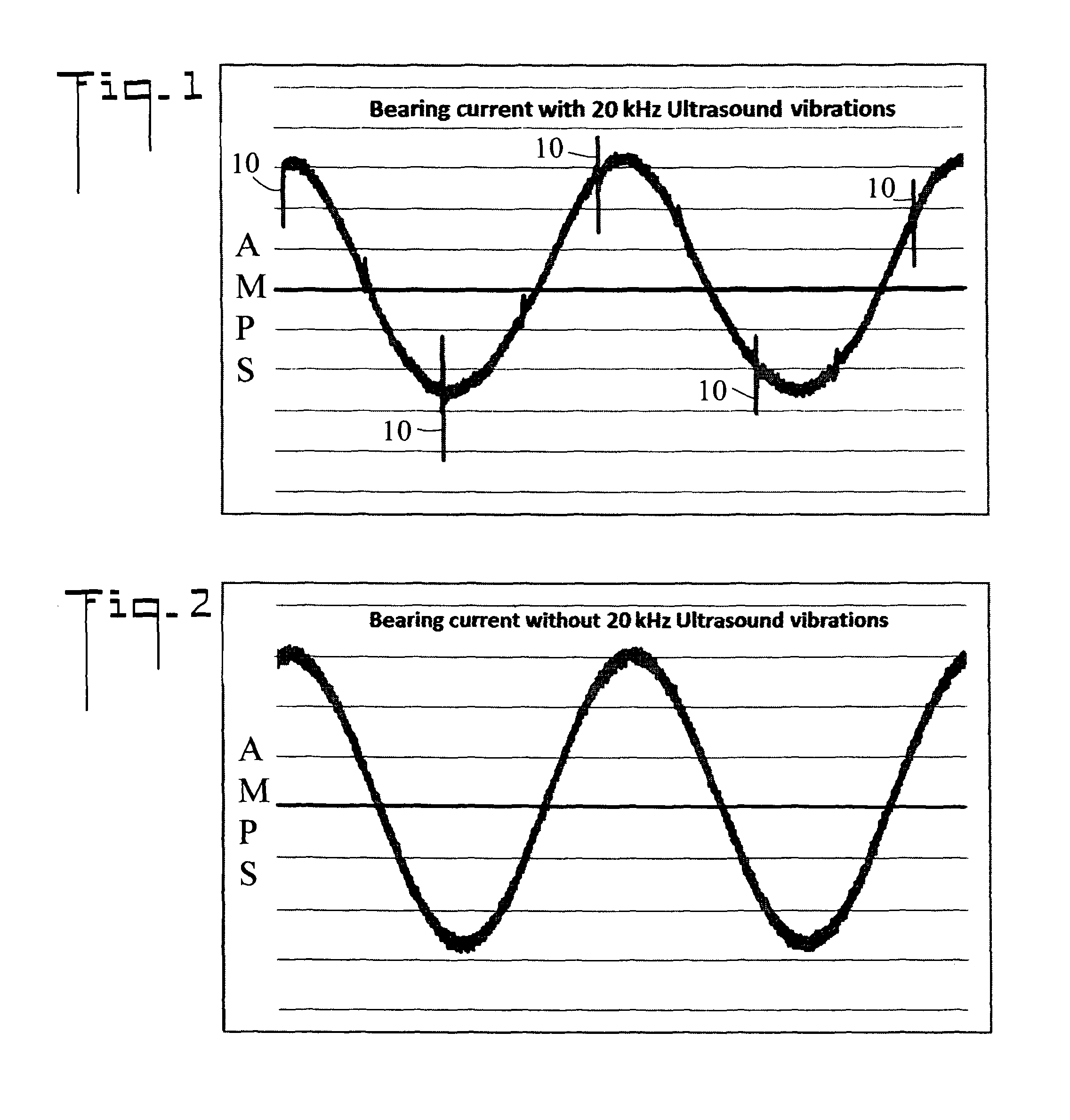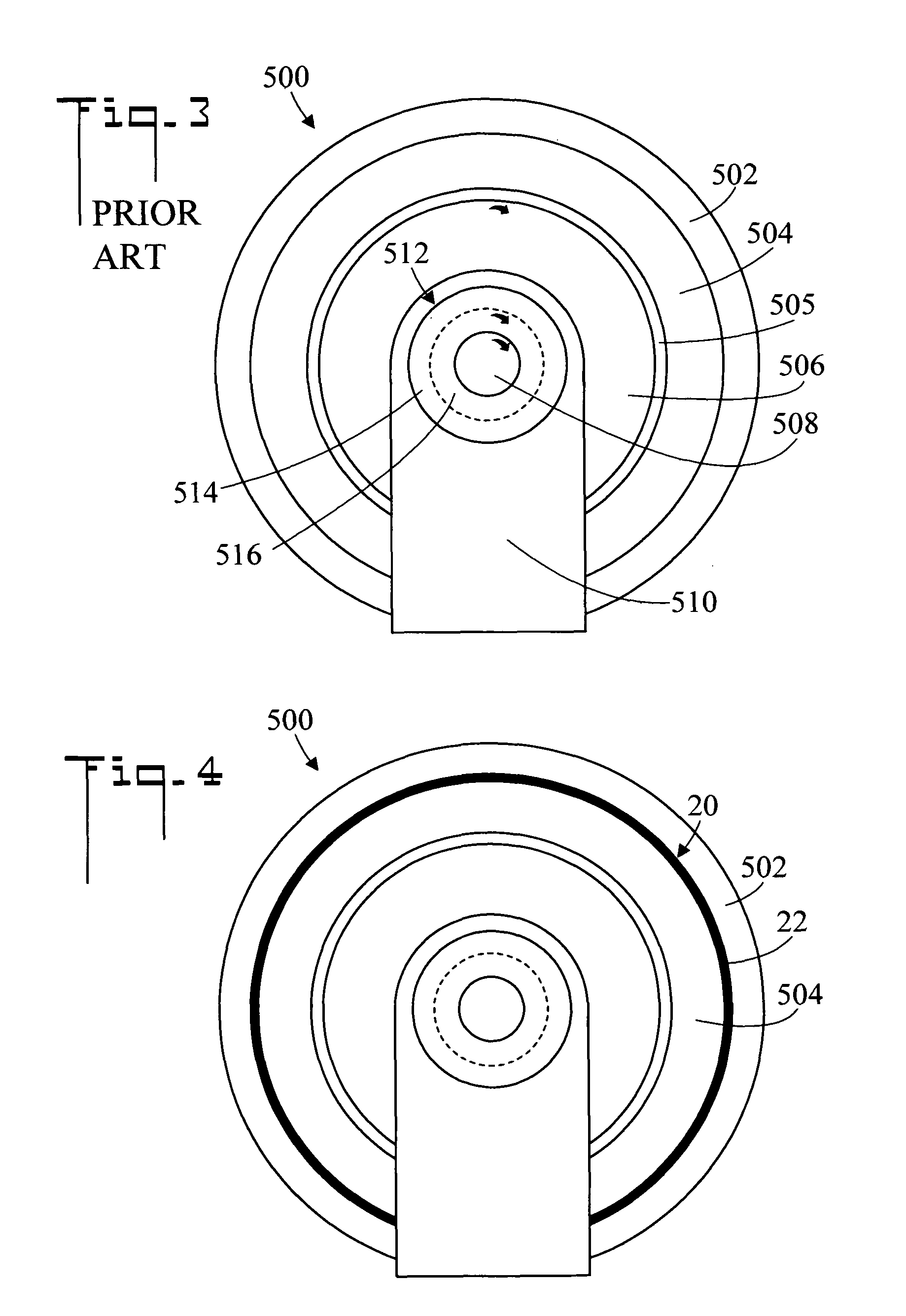Method for mitigating bearing failue in an AC induction motor and apparatus therefor
- Summary
- Abstract
- Description
- Claims
- Application Information
AI Technical Summary
Benefits of technology
Problems solved by technology
Method used
Image
Examples
first embodiment
[0031]Referring now to FIG. 4, there is shown an end elevation view of an AC induction motor 500 which includes a method and apparatus for mitigating bearing failure in the motor, generally designated as 20. To prevent high frequency vibrations from exciting bearing 512 and causing cavitation, a resilient vibration-absorbing material 22 in the form of a dampening spacer is circumferentially inserted between motor frame 502 and stator 504. In an embodiment, the hardness of vibration-absorbing material 22 can vary between a Shore A hardness of about 30 and about 60, as is obtainable using for example a Dow Corning® silicone rubber RTV 3110.
[0032]The reference to a specific silicone material and Shore A harnesses are to be seen as examples only. Many other materials known to the industry are suitable to be used in the design of attenuators for high frequency vibrations. Additionally, the vibration-absorbing spacers 22 can consist of physically separated vibration-absorbing spacers 22 r...
second embodiment
[0033]FIG. 5 is an end elevation view of an AC induction motor 500 which includes the method and apparatus for mitigating bearing failure in the motor. In this embodiment vibration-absorbing material 22 is placed between bearing mount 510 and outer race 514 of bearing 512.
third embodiment
[0034]FIG. 6 is an end elevation view of an AC induction motor 500 which includes the method and apparatus for mitigating bearing failure in the motor. In this embodiment vibration-absorbing material 22 is placed between inner race 516 of bearing 512 and shaft 508 of rotor 506.
[0035]FIG. 7 is an end elevation view showing another placement of vibration-absorbing material 22. In this embodiment vibration-absorbing spacers 22 consist of a plurality of physically separated vibration-absorbing spacers 22 rather than the continuous spacers shown in FIGS. 4-6.
[0036]In summary, a method for mitigating bearing failure in an AC induction motor 500 having a motor frame 502, a stator 504, a rotor 506 having a shaft 508, an air gap 505 between stator 504 and rotor 506, a bearing mount 510, and a bearing 512 having an outer race 514 and an inner race 516, includes:
[0037]placing a vibration-absorbing material 22 in at least one of the following locations;[0038](1) between motor frame 502 and stat...
PUM
 Login to View More
Login to View More Abstract
Description
Claims
Application Information
 Login to View More
Login to View More - R&D
- Intellectual Property
- Life Sciences
- Materials
- Tech Scout
- Unparalleled Data Quality
- Higher Quality Content
- 60% Fewer Hallucinations
Browse by: Latest US Patents, China's latest patents, Technical Efficacy Thesaurus, Application Domain, Technology Topic, Popular Technical Reports.
© 2025 PatSnap. All rights reserved.Legal|Privacy policy|Modern Slavery Act Transparency Statement|Sitemap|About US| Contact US: help@patsnap.com



